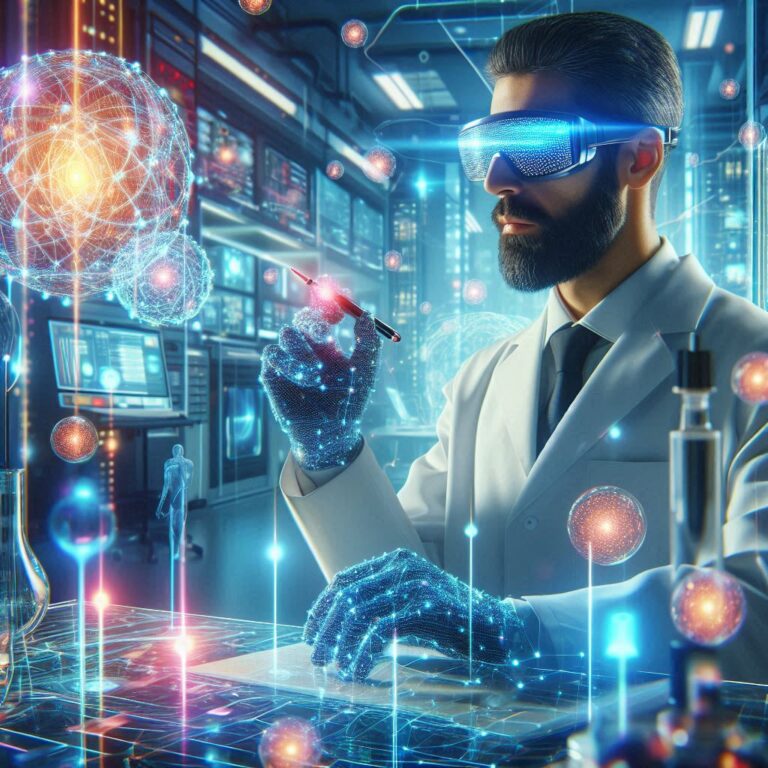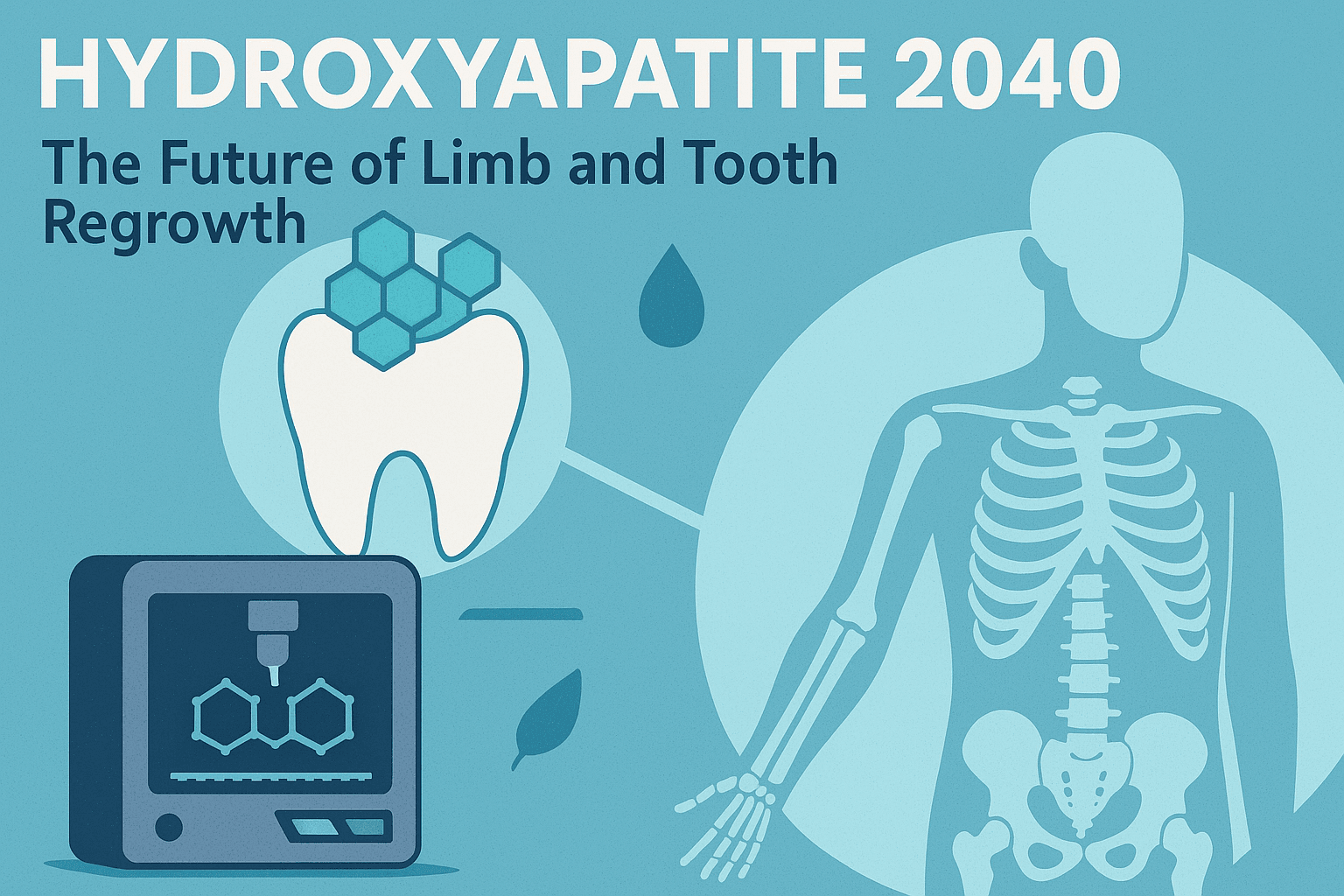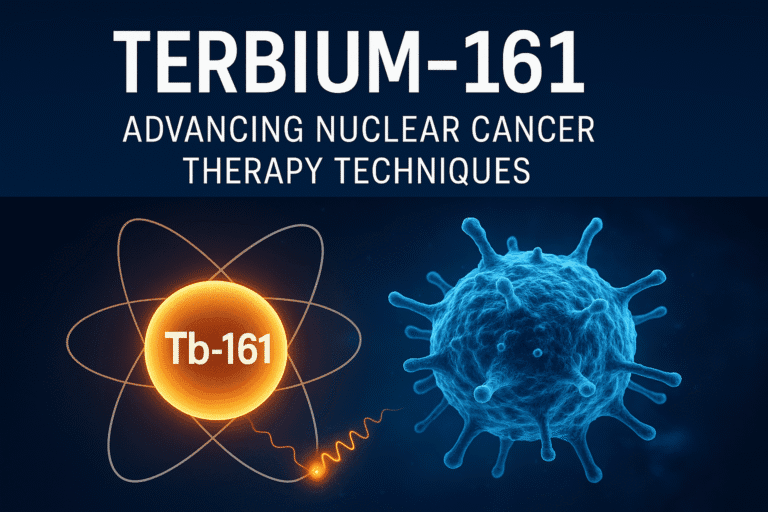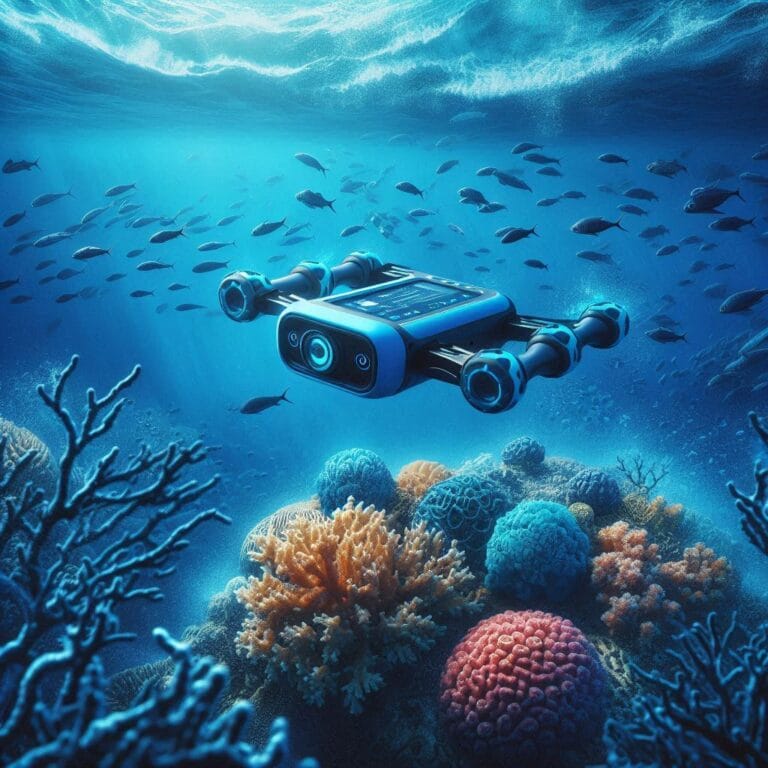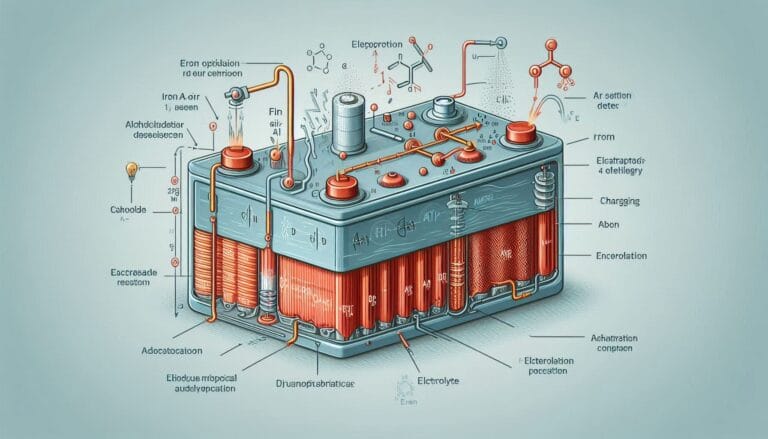Introduction to Suspended Animation
What Is Suspended Animation?
Suspended animation is a state in which biological functions, such as metabolism and cellular activity, are temporarily slowed or halted, allowing an organism to survive extreme conditions. Unlike death, where all vital processes cease permanently, suspended animation enables the body to preserve itself in a controlled state until normal function is restored. This concept has long been a subject of fascination in science fiction, but modern research is turning it into a medical and scientific reality.
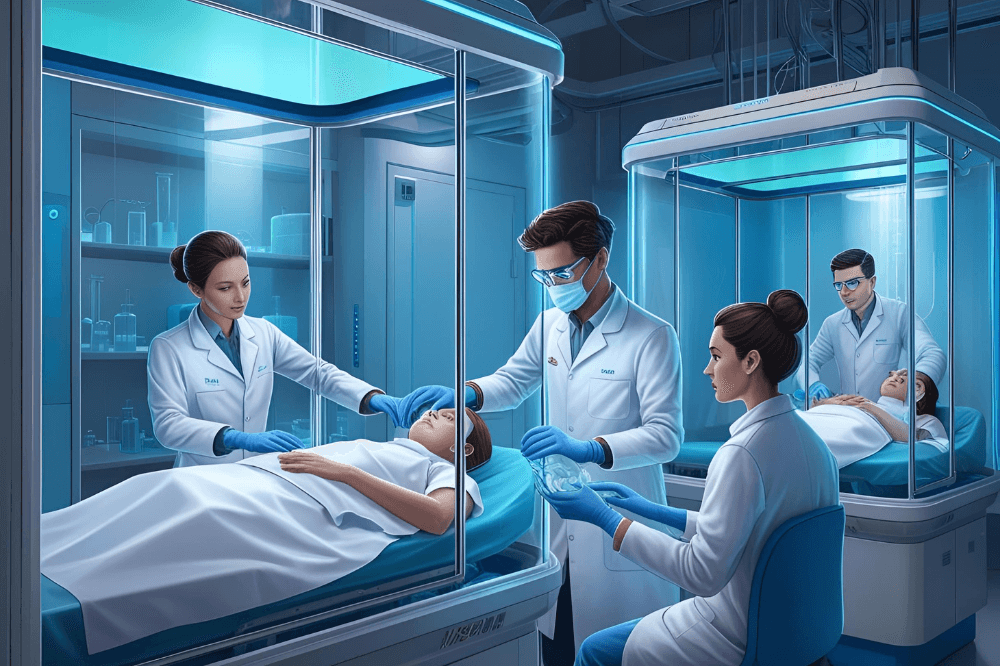
Scientists define suspended animation as an induced or naturally occurring process that slows down life functions to near standstill without causing permanent damage. By reducing oxygen consumption and metabolic activity, the body can survive conditions that would otherwise be fatal.
Historical Context: From Science Fiction to Medical Reality
The idea of suspended animation has existed for centuries, inspired by animals like Polar bears and Arctic squirrels that undergo hibernation. In mythology and literature, stories of people frozen in time have fueled curiosity about whether humans could ever achieve a similar state.

The modern exploration of suspended animation began in the 20th century with cryopreservation and hypothermic experiments. Scientists discovered that lowering body temperature could slow metabolism and prevent tissue damage, laying the foundation for today’s medical applications. Research accelerated when NASA and leading medical institutions started investigating its potential for trauma care and space travel.
Why Suspended Animation Matters
The ability to control suspended animation could revolutionize multiple fields, offering solutions to some of humanity’s greatest challenges. Key areas of interest include:
- Medicine & Emergency Trauma Care – Suspended animation is being explored for critical medical procedures, such as reducing blood loss in trauma patients. Controlled hypothermia is already used to “pause” the body during surgeries to prevent brain damage and extend survival time.
- Space Travel & Human Hibernation – Scientists, including NASA researchers, are investigating whether suspended animation could be applied to deep-space missions. If astronauts could be placed in a state of metabolic dormancy, long-duration space travel (such as missions to Mars) could become more feasible by reducing the need for food, water, and psychological support.
- Organ Transplantation – One of the most promising applications of suspended animation is in organ preservation. By slowing cellular decay, donor organs could remain viable for extended periods, increasing transplant success rates.
As research continues, suspended animation may soon transition from experimental trials to real-world medical and space applications. Scientists are working to refine techniques that safely induce and reverse this state in humans, paving the way for breakthroughs in healthcare, space exploration, and even longevity science.
With advances in medical technology, the question is no longer “What is suspended animation?” but rather, “How soon will we master its potential?”
The Science Behind Suspended Animation
Suspended animation is a state in which biological processes slow down significantly, allowing the body to preserve energy and survive extreme conditions. This process has been studied extensively for its potential applications in medicine, trauma care, and even space travel.
Biological Mechanisms: How Suspended Animation Works
At the core of suspended animation is the ability to reduce metabolic rates, which lowers the body’s oxygen demand. In normal conditions, cells require a constant supply of oxygen to maintain their function. However, by slowing down metabolism, cells can survive longer without oxygen, delaying the damage that would typically result from hypoxia (oxygen deprivation).
One of the key ways scientists achieve this is through induced hypothermia, a controlled lowering of body temperature. By cooling the body, chemical reactions slow down, reducing cellular damage during periods of reduced blood flow. This technique has been shown to preserve brain function and reduce organ failure in critical trauma situations.
Key Techniques of Suspended Animation
- Induced Hypothermia – This is the most widely studied method for suspended animation. It involves cooling the body to temperatures as low as 10–15°C (50–59°F), significantly reducing metabolic activity. Studies on animals, including dogs, have demonstrated that profound hypothermia can extend survival after cardiac arrest for up to two hours without brain damage. Recently, the University of Maryland conducted the first known human trial, successfully placing a patient in suspended animation to extend the window for life-saving surgery.
- Chemical Preservation – Certain drugs mimic the effects of hibernation by slowing down cellular activity. Researchers are investigating molecules that can inhibit energy production at a biochemical level, reducing the need for oxygen and preventing tissue degradation. These chemical agents could make suspended animation more accessible without requiring extreme cooling.
- Oxygen Deprivation Studies – Some species, such as the wood frog, can survive long periods without oxygen by switching to anaerobic metabolism. Scientists are exploring whether controlled oxygen deprivation in humans could trigger similar survival mechanisms. This could be particularly useful in emergency trauma care, where quick intervention is needed before major organ failure occurs.
Current Research in Trauma Care
Suspended animation is now being tested as a real-world medical intervention. The University of Maryland’s groundbreaking study demonstrated that emergency preservation and resuscitation (EPR)—a form of deep hypothermia—could extend survival time for patients with severe injuries. In animal studies, induced hypothermia has already shown promise in preventing brain damage following cardiac arrest.
As research continues, suspended animation may become a vital tool in surgery, space travel, and life-saving trauma interventions. The ability to pause biological processes safely could redefine the limits of human survival in extreme conditions.
Suspended Animation in Medical Applications
Trauma Surgery: Life-Saving Applications of EPR
Emergency Preservation and Resuscitation (EPR) is a groundbreaking medical technique aimed at extending survival for trauma patients, particularly those suffering from severe blood loss due to gunshot wounds, stabbings, or cardiac arrest. When traditional life-saving measures like CPR and defibrillation fail, EPR can “buy time” by cooling the body to extremely low temperatures (7°C-10°C) through a rapid infusion of ice-cold saline solution into the aorta. This drastically slows down metabolism, reducing oxygen demand and delaying cellular damage while surgeons work to repair injuries. The technique, currently under clinical trials at the University of Maryland, has already been used on at least one human patient.
Organ Transplantation: Enhancing Viability with Suspended Metabolism
One of the biggest challenges in organ transplantation is keeping donated organs viable for longer periods. Suspended animation techniques, including induced hypothermia, could extend organ preservation times by slowing cellular decay. Research suggests that future developments in chemical preservation and metabolic suppression could further extend storage times, improving organ availability and reducing transplant rejection rates.
Cancer Treatment & Neuroprotection: Future Possibilities
Suspended animation may also hold promise in oncology and neurology. By slowing metabolic processes, scientists believe it could temporarily halt tumor growth, allowing for more targeted and less toxic treatments. Similarly, in stroke patients, lowering body temperature and reducing metabolic activity could protect brain cells from oxygen deprivation, reducing long-term cognitive damage.
While still in experimental stages, medical suspended animation, particularly EPR, has the potential to revolutionize emergency trauma care, organ transplantation, and neuroprotection. As clinical trials progress, this technology could become a standard in life-saving medical interventions.
The Role of Suspended Animation in Space Travel
NASA’s Interest in Suspended Animation for Space Travel
Suspended animation in space travel is being actively researched by NASA and other space agencies as a potential solution for long-duration missions. The concept of human hibernation for deep space missions could significantly reduce the resources needed for interplanetary travel, particularly for missions to Mars and beyond. NASA’s Innovative Advanced Concepts (NIAC) program has explored the feasibility of cryogenic sleep for astronauts, aiming to place crew members into a hibernation-like state to conserve energy and supplies.
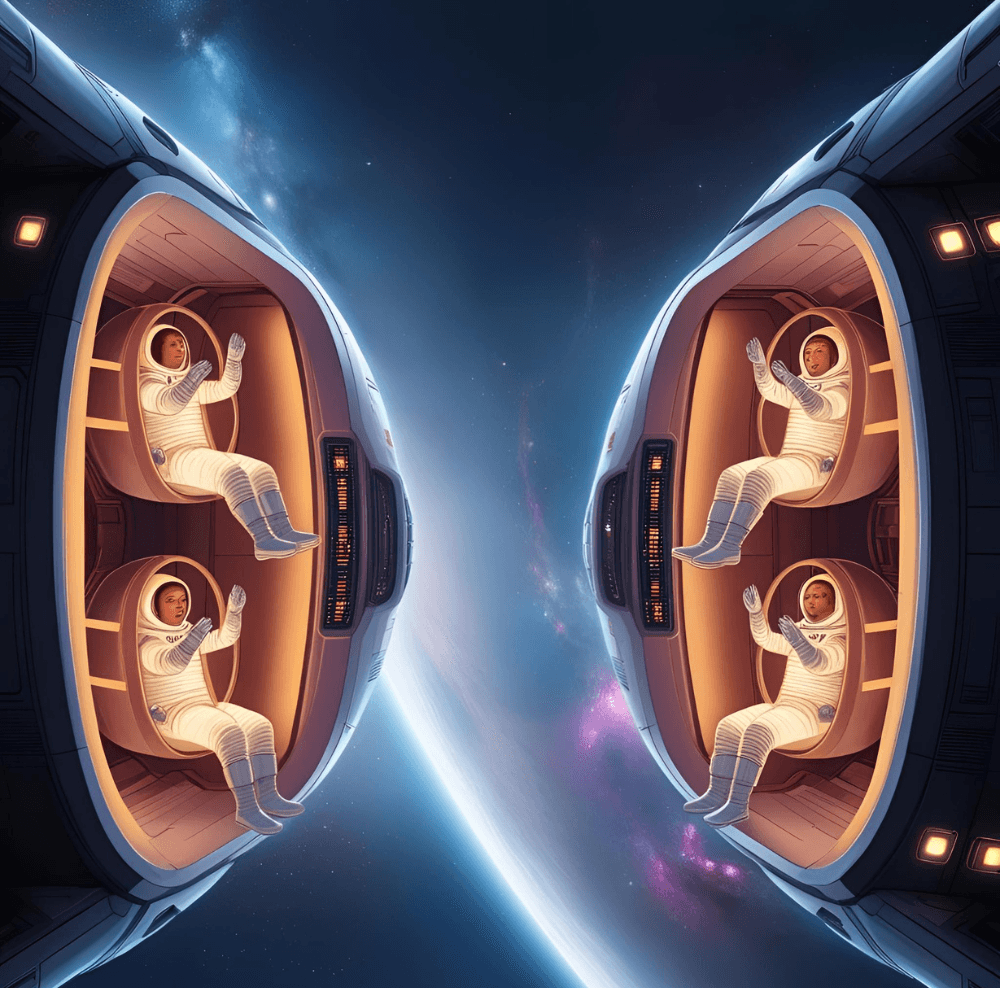
Metabolism Control: Reducing Resource Consumption & Radiation Exposure
One of the biggest challenges of deep space travel is sustaining astronauts over extended periods. By inducing a state of torpor, where metabolic activity is reduced by up to 70%, researchers believe astronauts could require fewer calories, oxygen, and water. This would also minimize muscle atrophy and bone loss—common issues faced during prolonged spaceflight. Additionally, suspended animation in space travel could reduce radiation exposure by decreasing cellular activity and potential DNA damage.
Challenges of Human Hibernation in Space
While the concept is promising, several major challenges remain:
- Rewarming Process: Safely bringing astronauts out of cryogenic sleep for astronauts without causing cellular or neurological damage.
- Long-Term Effects: Prolonged hibernation could lead to cognitive decline, muscle deterioration, and cardiovascular issues.
- Psychological Impact: Spending months or years in a dormant state could have unknown effects on mental health and social interaction post-mission.
Despite these challenges, human hibernation for deep space missions remains one of the most exciting frontiers in space exploration, potentially revolutionizing interstellar travel.
Ethical and Legal Considerations
Informed Consent in Medical Trials
One of the most pressing ethical issues in suspended animation revolves around informed consent. Suspended animation techniques, such as medical ethics of induced hypothermia, are still experimental, and patients undergoing emergency procedures (e.g., Emergency Preservation and Resuscitation (EPR)) often cannot give consent. This raises questions about patient autonomy and whether life-saving procedures should be performed without prior approval.
Socioeconomic Concerns: Who Gets Access?
As the future of human hibernation moves closer to reality, there are concerns about accessibility. Could only the wealthy afford cutting-edge suspended animation treatments? If hibernation extends life expectancy, would it deepen societal inequalities? These questions remain central to ongoing bioethical debates.
Philosophical Debate: What Defines Human Identity?
Suspended animation challenges traditional views on life and consciousness. If a person is placed in a state where they are neither fully alive nor dead, what does that mean for their identity? Some ethicists argue that prolonged unconsciousness, especially for space travel, could blur the boundaries of human existence.
As suspended animation technology advances, society will need to address these ethical, legal, and philosophical concerns before widespread adoption.
Future Prospects & Breakthrough Technologies
Next-Generation Cooling Techniques
One of the biggest breakthroughs in the future of suspended animation is the refinement of cooling and rewarming methods. Recent research focuses on vitrification, a process that prevents ice crystal formation by turning biological material into a glass-like state at ultra-low temperatures. Scientists are developing cryomesh-based vitrification, which significantly improves rapid cooling and rewarming of biological samples, reducing the risk of cell damage. Additionally, joule heating technology is emerging as a promising method to achieve ultra-fast, controlled warming, which is crucial for safely reviving suspended biological systems.
Synthetic Hibernation Drugs
Research into microRNA-based therapies inspired by hibernating animals, such as lemurs, could lead to pharmacological solutions for human suspended animation. MicroRNAs regulate gene expression and help prevent muscle atrophy, organ damage, and metabolic dysfunction during hibernation. Scientists are exploring ways to replicate this natural process in humans for space travel and medical applications.
Potential Commercial Applications
The long-term applications of suspended animation go beyond space travel. Emerging possibilities include:
- Longevity & Anti-Aging: Suspended animation could potentially slow biological aging, extending human lifespan.
- Medical Preservation: It may allow doctors to preserve critically ill patients for extended periods until better treatments are available.
- Cryogenic Space Travel: Future missions to Mars and beyond may utilize hibernation-like states to minimize resource consumption and radiation exposure.
Conclusion: The Future of Suspended Animation
Summary: From Sci-Fi to Reality
Suspended animation is transitioning from a concept in science fiction to an emerging field with real-world applications. From emergency trauma care to space exploration, advancements in cryogenic sleep, induced hypothermia, and biostasis are redefining what’s possible in medicine and technology.
Broader Implications
- Medical Revolution: The ability to pause and restart biological functions could transform trauma care, organ transplantation, and neuroprotection.
- Deep Space Missions: Suspended animation offers a solution to the challenges of long-duration space travel by reducing metabolic needs and radiation exposure.
- Future Human Evolution: If perfected, it could fundamentally alter human lifespans and our approach to healthcare and aging.
Final Thoughts
While the potential of suspended animation is immense, ethical, technological, and biological challenges remain. Ensuring safe rewarming, addressing long-term health effects, and navigating the ethical dilemmas of induced stasis will be critical for its future adoption. With continuous advancements, suspended animation could soon be a pivotal technology in medicine, space travel, and human longevity.
Explore More on the Future of Space and Technology
Suspended animation opens new doors for space travel and medical science. If you’re interested in cutting-edge advancements, check out these exciting reads:
🚀 Plasma Jet Engines: The Future of Space Travel – Discover how plasma propulsion could revolutionize deep-space missions.
🌑 The Future of Space Mining – Learn how asteroid mining could fuel the next industrial revolution.
🛰️ Tethered Satellites: Key to Space Sustainability Progress – Understand how tethered satellites can help manage orbital debris.
🤖 AI in Space Exploration – See how artificial intelligence is shaping the future of interplanetary exploration.
Stay ahead of the curve with the latest insights in space technology and innovation! 🚀

